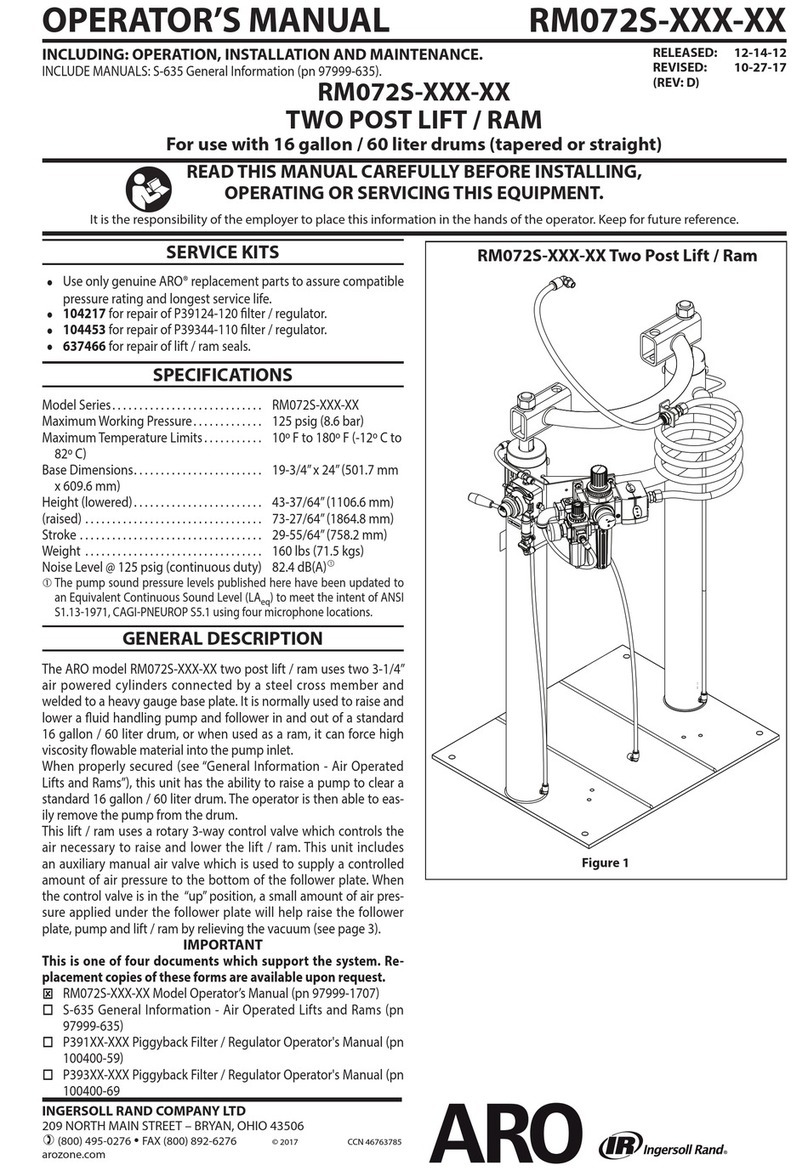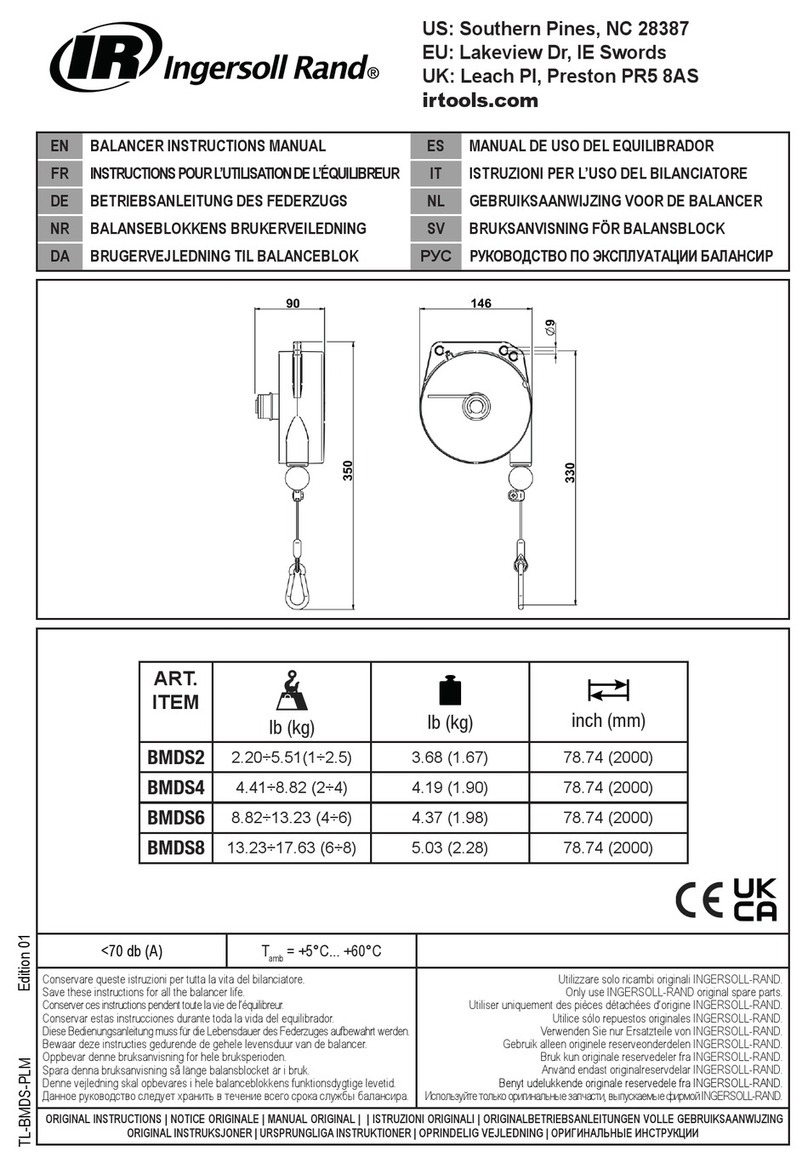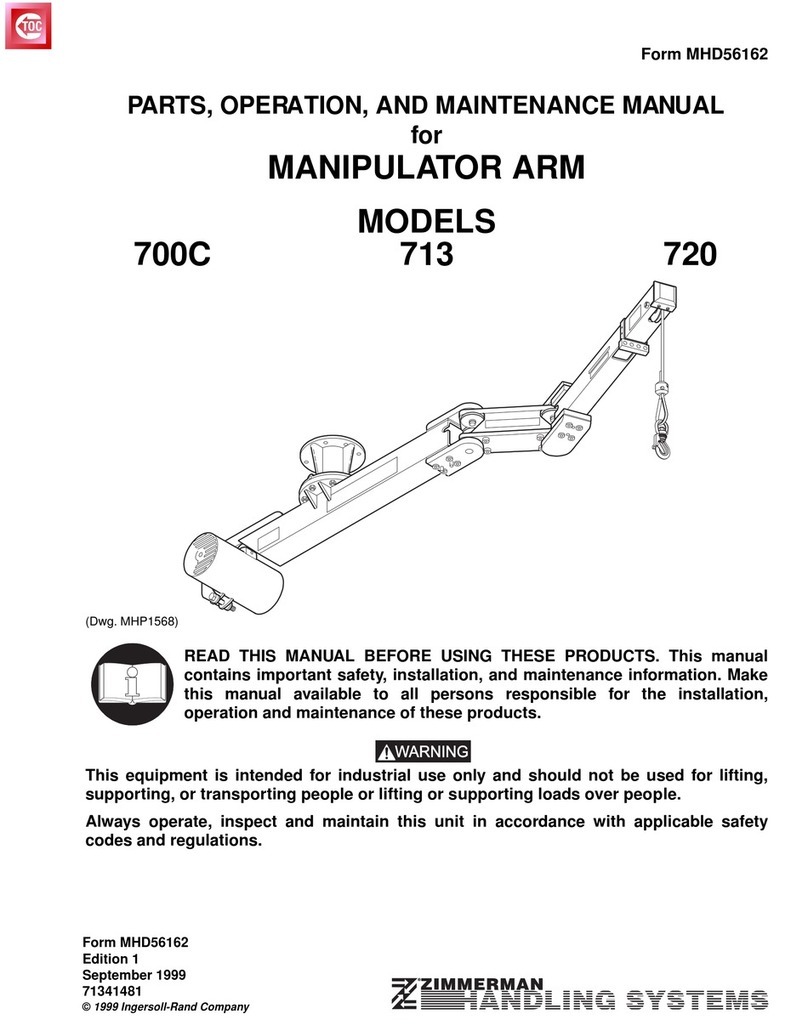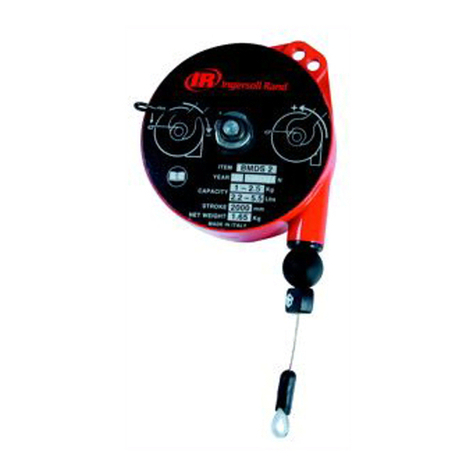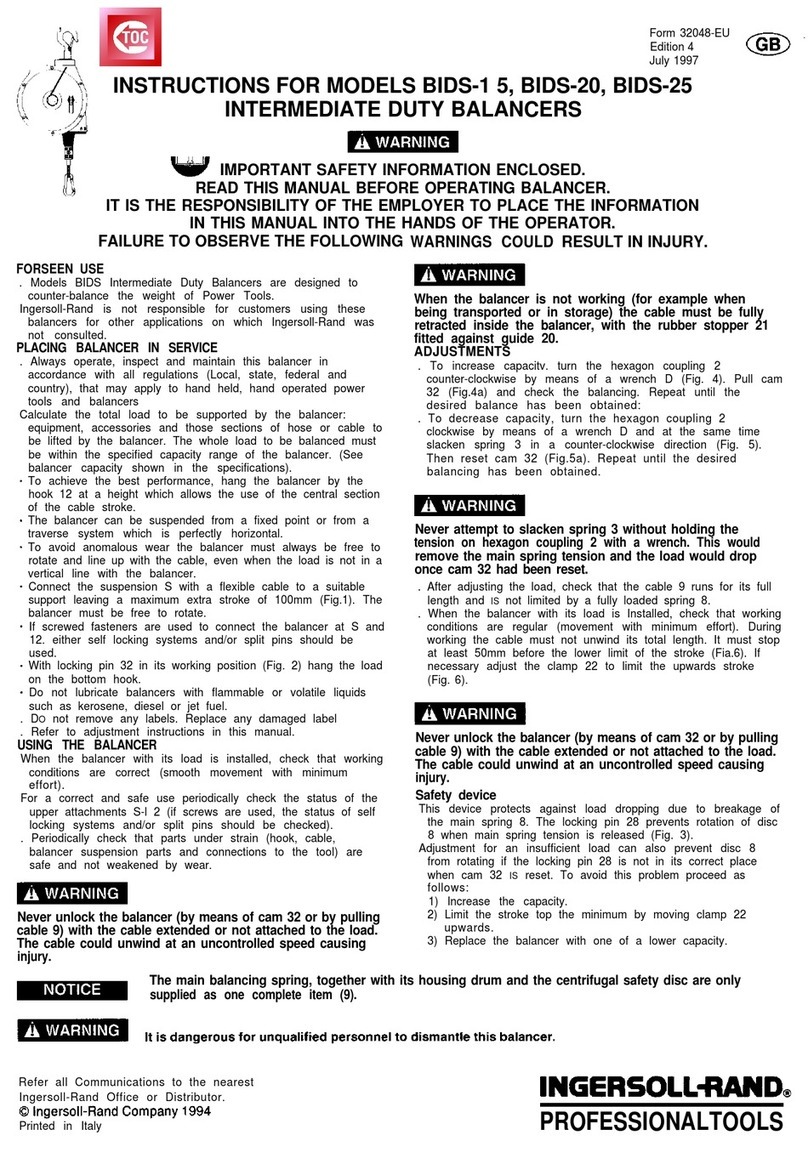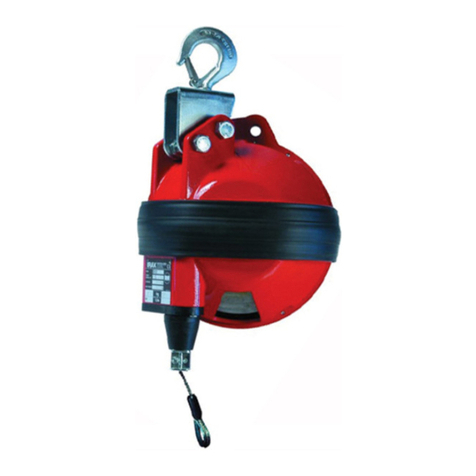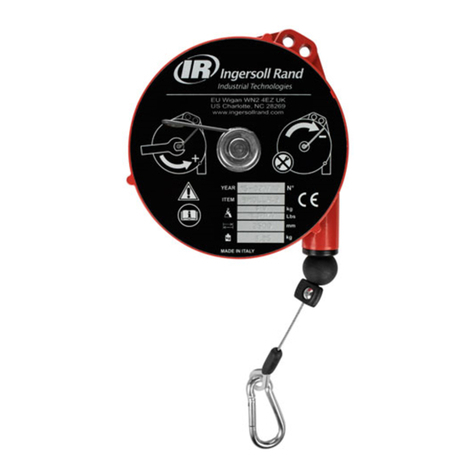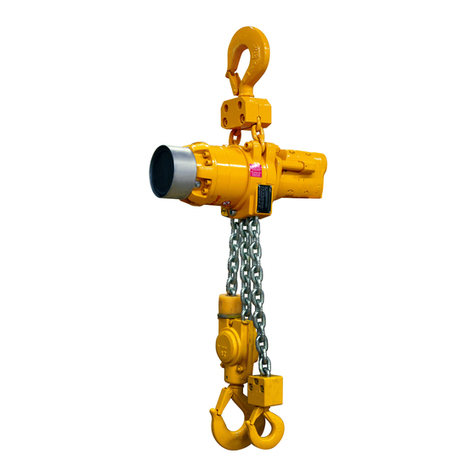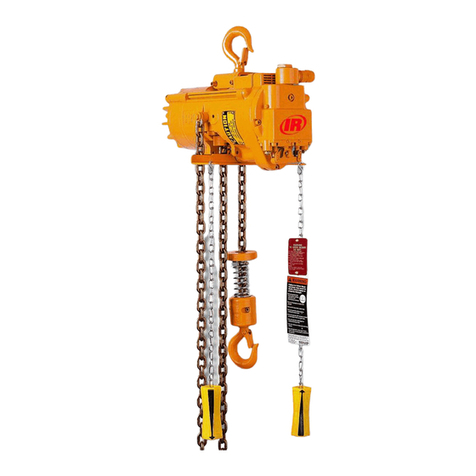
10 MHD56162 - Edition 2
OPERATION
Description Of Operation
The Manipulator Arm is an integrated group of components
designed to maximize the interaction of man and machine. The
Manipulator Arm mounts to an overhead beam or rail system and
incorporates a Zimmerman balancer. The balancer has a wire
rope with load hook which is fed through the Manipulator Arm to
the work area. The operator controls the system by use of the
Zimmerman ZA (Zim-Air) up and down control or the
Zimmerman 2PS (2 Position Sensor) zero gravity control.
The system renders the load virtually weightless through the
balancer’s compressed air operation. When the Manipulator Arm
is mounted to a rail system it provides for ease of horizontal
movement. This combination requires little physical strength to
operate and reduces operator fatigue.
Balancer Operation
Energy used to power the balancer is compressed air, a minimum
of 70 psig (4.8 bar/480 kPa) is required. Air is controlled by an
external control package. Compressed air pushes against the
piston, causing it to move laterally.
The piston pushes the reel assembly causing the reel to move
laterally as well as rotate which winds the wire rope into the
balancer, raising the hook or handling device. Compressed air is
released through the controls to atmosphere and the reel rotates in
the opposite direction lowering the hook or handling device.
The balancer reaches maximum capacity when 100 psig (6.9 bar/
690 kPa) is applied. As air pressure decreases the unit capacity
decreased proportionally. If 80 psig (5.5 bar/552 kPa) is applied to
the balancer, maximum balancer operational capacity is 80% of
rated capacity.
Control Operation
The Manipulator Arm uses the Zimmerman ZA (Zim-Air) or
2PS (2 Position Sensor) control package.
ZA Control
The Zim-Air control package utilizes an up/down control
pendant, connected to the manifold mounted to the balancer. The
top of the manifold has two flow control valves, labeled “UP” and
“DN”. They control the speed with which a load will raise and
lower. The center screw control is for “hook balance adjustment”
to maintain the hook in a floating condition when it does not have
a load on it.
Air is supplied through the manifold to the control pendant. When
the “UP” lever is depressed, air passes through a passage in the
pendant and into the balancer piston chamber resulting in the
balancer raising the load. Lowering the load is accomplished by
depressing the “DN” lever, which releases air in the balancer to
atmosphere through the block, and lowers the load.
2PS (2 Position Sensor)
This style control utilizes the EA Regulator and Two Position
Sensor Valve.
The EA Regulator provides a control circuit and a work circuit
through the regulator for balancer operation. The trim valve is an
adjustable flow control providing a (control circuit) regulated low
volume of air to the main regulator. The main regulator provides a
higher volume of air to the piston chamber of the balancer. The
auxiliary flow control allows air to be bled to atmosphere to
support a lighter load.
The Two Position Sensor Valve is a pilot operated, four way, spring
return valve. Pilot signal is sent to the valve by a switch mounted
on the handling device, or by a pilot line from the clamp circuit.
The EA Regulator controls operation of the balancer when the
handling device has a load attached to it.
The Two Position Sensor Valve controls balancer operation when
the handling device is empty by bleeding air pressure from the
EA Regulator to atmosphere.
The pilot signal shifts the 2PS valve to a blocked port giving the
EA Regulator full balancing control of the handling device and
load. Once the load is placed and released, the spring return will
over come the pilot signal shifting the valve back to a bleed
condition balancing the empty handling device.
Manipulator Arm Operation
WARNING
• If system air pressure is lost, lower the load immediately. The
operator must stay out of the path of the load. Clamp may lose
force required to hold load resulting in injury.
The “UP” and “DN” levers allow adjustable speed control. As
lever is depressed further, operational speed increases. Use lever
to ‘throttle’ speed to ensure controlled movement of the hook or
handling device.
CAUTION
• Do not wrap control hoses around the wire rope. Damage to
hoses and failure of unit may result.
Raising and lowering of the load is dependent on the type of
control circuit on the handling device. The Zim-Air (ZA) type
control requires manual lever operation to raise and lower the
device. If the handling device has a 2PS (2 Position Sensor)
control, the device is in zero gravity with or without a load and
requires the operator to push up or down to raise and lower the
device.
1. Move Manipulator Arm to the pick up point, and position it
over the load for pick up.
2. Slowly lower balancer and engage load until completely
seated.
3. Raise load and maneuver to the set down point.
4. At the set down point lower the load.
5. Maneuver the Manipulator Arm back to the pick up point
and repeat steps.
Positioning of the load is best accomplished by the operator, when
moving away from the manipulator arm pivot point. Manipulator
arm will freely follow.

